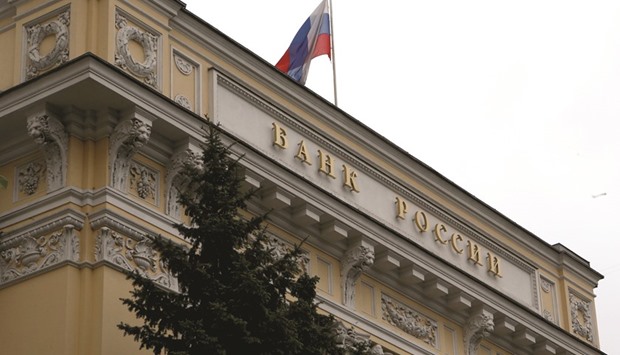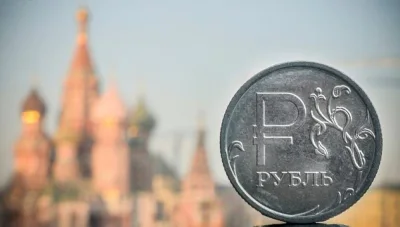Governor Elvira Nabiullina wasn’t about to run down the clock when only minutes remained before the Bank of Russia entered a self-imposed communication blackout.
As expectations mounted that central bankers on Friday will cut interest rates a second time this year, Nabiullina broke a two-month silence on monetary policy to deliver an unscheduled speech with only about an hour left before the week-long quiet period. Her message for Russian businesses that may be finding it difficult to adapt to restrictive policy: get used to it. Don’t wait for a sudden outside improvement or easing of domestic monetary conditions, she said at a conference in the Black Sea resort of Sochi, addressing everyone from banks to state institutions.
“What’s needed is to try to live and achieve success in the new conditions, primarily by raising productivity, efficiency, lowering costs,” Nabiullina said. “Positive real interest rates are a new reality in which the Russian economy is set to exist in the foreseeable future.”
A stance described as “moderately tight” by the central bank has already left Russia with the world’s second-highest real rates, even before annual inflation in August eased to the slowest in more than two years. In the absence of reforms that could help the recession-hit economy break out of its malaise, Nabiullina is presenting restrictive policy as the Swiss knife of economic solutions: encouraging savings and their transformation into investment, keeping borrowers from an excessive debt load and pushing companies to streamline their businesses instead of counting on price increases.
Derivatives traders scaled back their wagers for a rate cut in the next three months after Nabiullina’s first expansive speech on monetary policy since mid-summer. Forward-rate agreements fell to last week’s low on Friday, signalling 49 basis points of decreases. That’s down from 71 basis points on September 1.
Investors seeking bigger returns are taking advantage of this year’s second-best carry trade, sending the rouble on a 13% rally against the dollar in 2016, behind only Brazil’s real and the yen globally, according to data compiled by Bloomberg.
All but three of the 29 economists surveyed by Bloomberg say the central bank will cut its key rate to 10% on September 16, with the rest predicting it will stay at 10.5%. In June, policy makers reduced the benchmark for the first time in almost a year, cutting it by half a point.
The Bank of Russia will continue its “moderately tight” monetary policy, with the inflation rate now below its benchmark for the past eight months, Nabiullina said on Friday. While consumer-price growth slowed to 6.9% in August from a year earlier, the median value of inflation expectations remains at more than triple the central bank’s 4% target for next year. Policy makers overshot their price forecast in 2015 for a fourth consecutive year.
“If the central bank suddenly cuts rates after such a speech, it would contradict the tone of the statement,” said Irina Lebedeva, a fixed-income analyst in UralSib Bank in Moscow. “To lower rates against that background would mean giving the market some incorrect signals. The central bank’s actions should be predictable and understandable.”
The Bank of Russia’s goals are aligning with the government’s aim to shift to an investment-growth model after the crash in oil and the rouble’s crisis pushed the economy into the longest recession in two decades.
Lauded by Morgan Stanley as the “most orthodox” central banker in developing Europe, Nabiullina has previously pledged to keep the benchmark rate up to three percentage points above headline inflation to anchor expectations.
Keeping real rates stably in positive territory is an “important condition for healthy economic growth,” she said on Friday. The main tendencies in the economy and the pace of inflation “for now don’t look unequivocal and steady,” according to the governor.
“We see the stability of rates – their predictable and gradual decrease as far as inflation slows – as an important factor in stabilising the economy,” she said. It’s also “one of the conditions for a shift to growth, based in particular on higher labour productivity and efficiency.”
One of the threats to inflation is emerging from fiscal policy as the government’s second year of deficit spending floods the banking system with extra roubles. The central bank is also concerned with the risk of a possible increase in unsecured retail lending, as liquidity shifts into surplus for the first time since 2011.

A Russian national flag flies over the central bank headquarters in Moscow. The Bank of Russia’s goals are aligning with the government’s aim to shift to an investment-growth model after the crash in oil and the rouble’s crisis pushed the economy into the longest recession in two decades.

